
All categories
Featured selections
Trade Assurance
Buyer Central
Help Center
Get the app
Become a supplier

(235 products available)


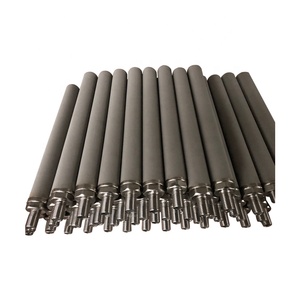
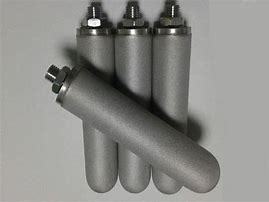
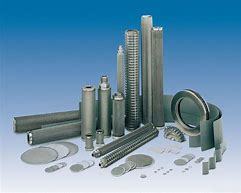


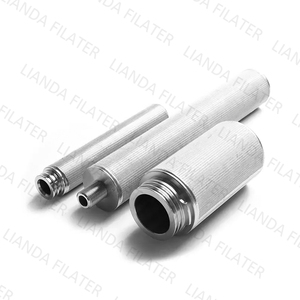
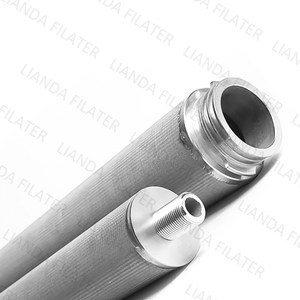

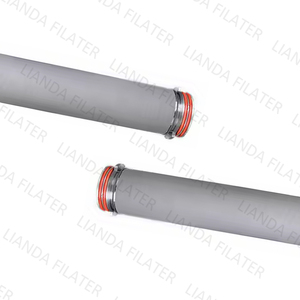

















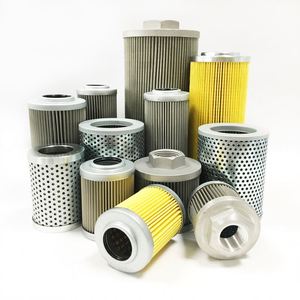






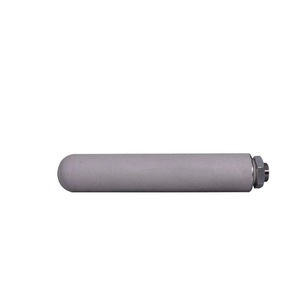



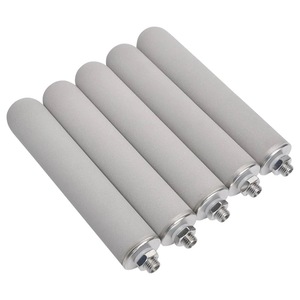
![[TS <strong>Filter</strong>] 0.2 0.45 1 5 Micron Titanium <strong>Sintered</strong> <strong>Filter</strong> <strong>Cartridge</strong> for Beer/Wine/Gas/<strong>Steam</strong> with High Temperature and Pressure](http://s.alicdn.com/@sc04/kf/H7f0fe640f7b74fa282463c34bb1898592.jpg_300x300.jpg)
![[TS <strong>Filter</strong>] 0.2 0.45 1 5 Micron Titanium <strong>Sintered</strong> <strong>Filter</strong> <strong>Cartridge</strong> for Beer/Wine/Gas/<strong>Steam</strong> with High Temperature and Pressure](http://s.alicdn.com/@sc04/kf/H69f9a4f95b5944aca0827119a2e4ac1dk.jpg_300x300.jpg)
![[TS <strong>Filter</strong>] 0.2 0.45 1 5 Micron Titanium <strong>Sintered</strong> <strong>Filter</strong> <strong>Cartridge</strong> for Beer/Wine/Gas/<strong>Steam</strong> with High Temperature and Pressure](http://s.alicdn.com/@sc04/kf/Hd9d22cf0367045f29fcfe793031929255.jpg_300x300.jpg)
![[TS <strong>Filter</strong>] 0.2 0.45 1 5 Micron Titanium <strong>Sintered</strong> <strong>Filter</strong> <strong>Cartridge</strong> for Beer/Wine/Gas/<strong>Steam</strong> with High Temperature and Pressure](http://s.alicdn.com/@sc04/kf/H9ad4deba4f104dbd808a02de0e025c405.jpg_300x300.jpg)
![[TS <strong>Filter</strong>] 0.2 0.45 1 5 Micron Titanium <strong>Sintered</strong> <strong>Filter</strong> <strong>Cartridge</strong> for Beer/Wine/Gas/<strong>Steam</strong> with High Temperature and Pressure](http://s.alicdn.com/@sc04/kf/H670b2e815776423eb36edfac509663563.jpg_300x300.jpg)
![[TS <strong>Filter</strong>] 0.2 0.45 1 5 Micron Titanium <strong>Sintered</strong> <strong>Filter</strong> <strong>Cartridge</strong> for Beer/Wine/Gas/<strong>Steam</strong> with High Temperature and Pressure](http://s.alicdn.com/@sc04/kf/Hf40a308c24384c468f62eb61e8bc3134m.jpg_300x300.jpg)


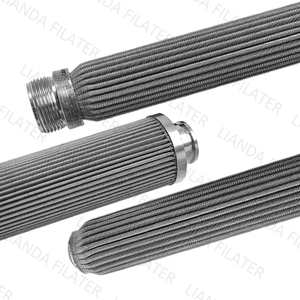
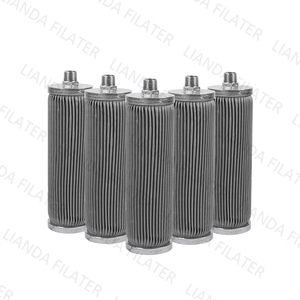


Reinforced nylons, stainless steel, bronzes, and ceramics are the common materials used to make the porous segments of sintered steam filtration cartridges. Thus, steam filtration filter cartridges can be divided into several categories based on the material they are made with, filtration sensitivity, and design.
Vent Sintered Filter Cartridges
A filtration cartridge with a very small aperture will successfully eliminate the moisture content in saturated steam and thus enhance the dryness of the steam even more. It is installed in the steam venting system, usually on the non-process side of control valves, pressure relief valves, or other critical process equipment. Its function is to protect sensitive equipment after the steam has gone through the condensation process.
In-line Sintered Steam Filter Cartridges
As the name suggests, Sintered Steam Filter Cartridges are installed directly in the pipelines or other equipment related to the processing of government requirements. Their role is to protect the entire processing system. These filters are constructed to withstand the pressure, temperature, and fluid types that occur during the normal operation of the processing system.
Self-Cleaning Sintered Filter Cartridges
Self-cleaning Sintered Steam Filter Cartridges are designed for use in applications with high concentrations of particles in the water vapor. Such filters have a mechanism that wicks the retained particles within the filter and is mostly used in processes where continuous filtration is necessary. They help prevent clogging and ensure that the filter cartridge's aperture size is high enough.
Y- Strainer Sintered Filter Cartridges
This one looks and works more like a Y-type pipe fitting with a filter element integrated into it. Designers often choose to use these cartridges where space is limited. Like other types of sintered steam filtration filter cartridges, they can be engineered to have Y strainers of varying mesh sizes to meet different application requirements.
Here's a quick overview of where sintered steam filtration filter cartridges are used in different industries.
Food and Beverage Industry
Cartridges are crucial in sterilizing steam used for product processing and equipment cleaning in this industry. They ensure that the steam used in these activities is free from contaminants that may affect the quality and safety of food and beverages.
Pharmaceutical Industry
These cartridges bother about eh purity levels of sterilized steam requirements in these industries. They play a key role in protecting sensitive processing equipment and ensuring that steam used in drug manufacturing and other pharmaceutical processes achieves the desired cleanliness standards.
Oil and Gas Industry
Oil and gas companies use these cartridges to filter steam used in enhanced oil recovery processes. In this application, the filters help prevent damage to wells and equipment caused by impurities in the steam. Therefore, they help improve the efficiency and yield of oil extraction processes.
Pulp and Paper Industry
The pulp and paper industry also relies on sintered steam filtration cartridge filters for their condensate return systems. The filters help ensure optimal system performance by removing impurities from the condensate, which can otherwise cause corrosion or scaling in boiling and drying equipment.
Chemical Industry
These filters are used to protect reactors, heat exchangers, and other critical equipment from contamination present in steam. They ensure that the steam used in various chemical processes is pure so as not to interfere with reactions or product quality. That's why they are crucial for maintaining quality control and preventing downtime due to equipment damage.
Energy Sector
In power generation, especially in steam turbines, cartridges are essential for protecting these turbines from contaminants present in the steam. The play an important role in improving the reliability and efficiency of power generation systems, particularly in facilities that use biomass or fossil fuel upsteam.
Manufacturing and S ervicing Industry
Cartridges are used in these industries to filter steam used in various applications. They ensure that steam used in processes such as equipment cleaning and sterilization in the manufacturing and servicing industry is free from contaminants that can damage products or equipment.
Filtration Sensitivity
Most filter cartridges have a filtration sensitivity that ranges between 1 and 100 microns. The filtration sensitivity refers to the smallest particle size that the filter can capture.
Filtration Efficiency
The efficiency of the filtration is typically over 99%. This means the filter can capture over 99% of particles that are the size of the filter's microns.
Steam Flow
The normal steam flow rate of filter cartridges is within the range of 100 and 8000 liters per hour. The flow rate, therefore, depends on the size of the filter and the micronic filtration sensitivity.
Maximum Operating Pressure
While most boilers operate at an average pressure of 0.7 bar, cartridges can handle pressures up to 10 bar. Filters can withstand high pressures, making it ideal for use in high-demand applications that require high-performance filtering.
Steam Temperature
Cartridges are designed to endure temperatures of up to 185 degrees Celsius. Such high temperatures make these cartridges suitable for sterilizing filtering in food, beverage, and pharmaceutical industries. That's why they are essential for processes that require high-temperature steam filtering.
The sintered steam filtration filter cartridge is meant for in-line installation in pipelines. Users should ensure that the directional arrow on the cartridge coincides with the flow direction in the pipeline. The filter should be securely fastened between two flanges or threaded connections and never forced into misaligned fittings. The cartridge should always be installed in a manner that allows for easy access for maintenance, such as cleaning or replacement.
Cartridges are meant to filter steam or gases that pass through them in industrial applications. The steam or gas should enter the cartridge through the inlet side, pass through the filter elements, and exit through the outlet side. Users should ensure that the cartridges are properly sized for their applications to maintain optimal filtration performance.
Cleaning or Replacing
For non-cleaning filters, maintenance personnel should replace them at the manufacturer's recommended intervals. For self-cleaning filters, operators should follow the filter's instructions for the cleaning process. One will usually need to monitor differential pressure across the cartridge to determine when replacements are required.
Monitoring Filter Performance
Users should always monitor the cartridges for signs of bludgeoning or filter failure. Common indicators of such filter failures are increased differential pressures, hissing sounds, or visible contaminants in the filtered steam.
Inspecting Filter Components
They should regularly check the cartridges for wear and tear and contamination. Such checks should be done on users who operate their cartridges under heavy demand. During this maintenance, worn or damaged parts should be repaired, and replacement should be done. Also, the filter element should be examined for cracks, holes, or abnormal growth of installed membranes.
Proper Storage of Filters
Follow proper maintenance procedures for handling and storing filters. Cartridges should be stored in a cool, dry place away from direct sunlight and extreme temperatures. Moreover, filters should be kept in their original packaging to protect them from damage or contamination.
Filter Media
Filters tend to work best when the filter media is crafted from high-quality materials like stainless steel. Stainless steel is the most common material that offers excellent corrosion resistance and durability. Furthermore, the filter media's pore size should be uniform to ensure consistent filtration across the entire cartridge.
Manufacturing Process
Since the cartridge is termed "sintered," its manufacturing process plays a crucial role in determining its performance. Filters with a sintered process that bonds particles together create a stronger and more durable filter structure that's pore size cannot easily be changed under pressure. That's why choosing a cartridge from a reputable manufacturer who has experience in sintered filtration is essential.
Quality Materials
The best sintered steam filtration filter cartridges are made of high-quality materials like stainless steel, nylon, and ceramics. Each of these materials have unique benefits they bring. For instance, stainless steel cartridges offer superior strength and corrosion resistance. On the other hand, bronzed and ceraned cartrideges are often used in applications that require high durability.
Certifications & Standards
Users should look for cartridges that meet industry standards like ISO certifications. These certifications ensure the filter manufacturer adheres to quality control measures that guarantee product performance.
Proper Installation
Improperly installed cartridges can lead to leakage, steam loss, or even explosions in worst-case scenarios. That's why manufacturers should always ensure the cartridge is securely fastened and properly aligned within the pipeline.
Bypass Safety
SafelyDesigned cartridges with built-in bypass mechanisms ensure that even in situations where the filter is saturated, steam will continue to flow without back pressure that may damage the filter element. Although not always preferred, bypass can be lifesaving in extreme conditions.
Regular Maintenance
Failure to adequately maintain sintered steam filtration filter cartridges can lead to equipment failures. Moreover, regular maintenance identifies leaks and wear and tear while preventing filter saturation, which can cause bursts.
Monitoring Filter Performance
Post-installation safety measures should include regular monitoring of filters for signs of saturation, damage, or excessive pressure differentials. Automated monitoring systems can help technicians detect filter problems early and reduce the risk of filter failure.
Yes, user-friendly cartridges are constructed with high-strength porous materials such as stainless steel and ceramics to endure temperatures above 100 degrees Celsius without compromising their filtering ability. Therefore, these filters are suitable for steam filtering in food, beverage, and pharmaceutical industries.
The lifespan of a cartridge largely depends on the quality of the steam being filtered, as well as the operating pressure and temperature conditions. cartridges can last anywhere from 6 months to 2 years in less demanding environments. However, in high-contamination or extreme conditions, they may only survive a few weeks.
A filter's micron rating refers to the smallest particle size it can capture. Filters with larger micron ratings have very small apertures that allow more particulate matter to pass through. Such filters are generally used in applications that require the filtered material to contain more particulate matter. Conversely, cartridges with smaller micron ratings are constructed with microscopic apertures, allowing very little particulate matter to pass. These are the go-to filters for applications that require high pure filtered material.
Cartridges are predominantly low-maintenance filters. However, users should periodically inspect them for signs of saturation or damage. The best practice maintenance for these filters is replacement. Some filters have a self-cleaning function that wicks away the trapped particles and extends the cartridge's lifespan.
The first consequence of pushing steam through a saturated filter is that contaminants come into contact with the filtered material. This not only affects product quality but also endangers the equipment into which the steam is released. There is always back pressure on filter elements, increasing the likelihood of bursting or cracking when saturated filters are in use. This can pose a danger to nearby maintenance workers and even cause damage to equipment.